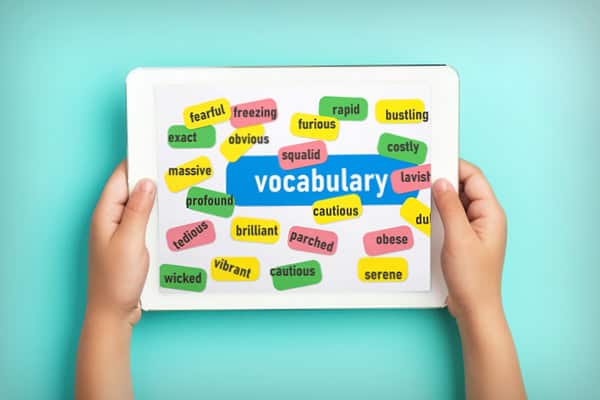As students move through elementary and middle school, demand for vocabulary knowledge increases significantly, writes Ashley Pursley, a digital integration specialist, in eSchool News. Entering ninth grade, students are expected to know and understand approximately 88,500 word families (Fisher & Frey, 2014). The challenge of ensuring students develop a robust vocabulary by ninth grade can be aided by using technology to help implement key vocabulary instructional strategies.
Here are Pursley’s five favorite vocabulary strategies that are amplified by technology:
Word Sorts is an interactive strategy that has students categorizing words based on shared attributes. Grouping words into categories enables students to better understand the relationships between words, enhancing their semantic knowledge. Technology amps up this strategy by giving students immediate feedback when completing closed word sorts and an authentic audience for open word sorts. The Flippity Group Game tool allows users to create their own groups similar to the popular Connections game by The New York Times.
Jazzing the Text supports engagement with words, phrases and sentences through contextual understanding and collaborative discussions. Students receive a frame for summarizing a passage by identifying one word, phrase and sentence that stands out. That information is shared in a round-robin format starting with the word. This encourages students to hear different perspectives on the same texts and discuss their insights with peers.
AnswerGarden allows students to share their findings on a collaborative board which allows the class to see and hear the word, phrase, and sentence. The tool emphasizes words, phrases or sentences that multiple students select by making them larger. Students receive a more visual picture of the main idea and critical words.
Frayer Model is a graphic organizer that helps develop an understanding of a word by identifying its definition, characteristics, examples and non-examples. The Studio Board tool’s expansive content library can be used by students to complete their Frayer Models, drawing connections from a variety of media including images, audio and video. Students share their products with each other to teach their peers about new vocabulary words.
Semantic Gradients enable students to examine the spectrum of meaning within a set of related words. Teachers start with a topic such as “appearance” or “emotion” and give two anchor words to serve as extremes, like “beautiful/ugly” or “happy/sad.” Students brainstorm a list of related words, or the teacher can provide a list for a scaffold.
Teachers create a template for this exercise in Canva, a free graphic design tool for educators. The template, which differentiates appropriate scaffolds, gives teachers an efficient way to provide the framework for students. Canva can also strengthen the rigor of the activity by having students add images to each word and use the audio recording tool to provide their justifications in a class discussion.
Six Step Vocabulary Acquisition comes from the work of Robert Marzano, with students acquiring meaning of terms by explaining the definition, restating the definition, showing a visual representation, discussing, refining and applying vocabulary words to a context.
Flashcard Factory provided by Pear Deck gamifies this strategy. Teachers assign a list of vocabulary words and definitions (step one). The tool simulates a factory where assigned student pairs are divided into the day shift and the night shift. The factory machine delivers terms, and the student pairs restate the definition as they discuss the term (step two). One student shows a visual representation of the term (step three); the other student creates a sentence with the term (step four). After the shift, the class participates in quality control by selecting only the best vocabulary cards (step five). Finally, students study the terms with their new flashcards (step six).
Integrating technology into vocabulary instruction enables teachers to expand on traditional strategies to create more engaging and effective learning experiences, Pursley writes. Students interact with words in dynamic ways to promote deeper understanding and retention.
eSchool News





